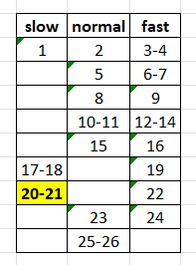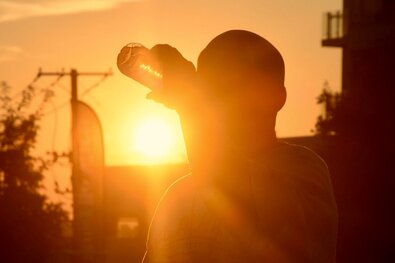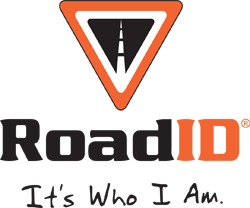 I've run Boston 3 times, each time was quite the experience! Here are a few things to know. Pre-Race: You will go to the finish line area (actually Boston Commons, a few blocks away from finish) and catch a shuttle bus to the start. The race doesn’t start until 10:00am, but you will catch the bus very early, like 6:00am! It will take you to the athlete’s village in Hopkinton. The bus ride will take nearly an hour. At the athlete’s village you hang out for a few hours waiting for the start. There will be lots of large tents, with food (bagels, bananas,....), drinks (water, coffee, sports drinks) and a bazillion porta-potties! This area is at a school. That said, bring whatever food you are planning to eat, just to be sure you have what you are used to eating before you run. I recommend finding some cardboard the day before the race and carrying it with you to the start area. A few pieces that you can carry under your arm onto the bus. This will give you something to sit/lay on that morning while you are hanging out at the athlete’s village. If you are on the ground the cardboard will keep you dry, if you are on the concrete it will be a little cushion. Also bring a couple of large garbage bags. They can keep you dry and warm prior to the race. I usually find a spot next to one of the school buildings, away from the crowd, usually a dry place next to a brick wall, out of the wind. There is a bag check for your warmups BUT it is nearly ¾ of a mile from the start, so wear some old clothes that you don’t mind ditching at the start line, never to be seen again! You will check your bag and walk to the start. I also recommend wearing an old pair of shoes just in case you step in mud or water, then tossing them before the race, switching to the shoes you will run in. There will be lots of Porta Potties in the athlete’s village, as well as by the start line. You will be lined up 10-15 minutes before you start running. Once the gun goes off it will take you several minutes to reach the actual start line. Most of the runners around you will be running your pace or faster, so be patient, avoid getting caught up in the excitement. In the first mile there will be crowds, then a few wooded areas that runners will jump off the course to pee! Pace Strategy: Patience! Most of the course is a slight downhill, so you will have some fast miles. These fast miles can take a toll on your quads by the time you hit the last 5 miles! My advice is to run the first 5 miles on effort, keeping it very easy allowing your body to warmup. Don’t get caught up on your splits (unless they are really fast, which is a sign you need to slow down!) In 2008 my first 5 miles were my slowest and I ran a PR. In 2013 I was 2 minutes behind my goal pace time at 5 miles, which really stressed me out. I was stressing out, but forced myself to stay calm and stick to my plan. I made it all that time back up and more to run a PR! So relax for 5 miles! The course has some slight (almost unnoticeable) elevation changes, so your mile splits will vary even if your effort remains steady. Here are links to pace calculators that take into the course elevation changes so you can have a realistic idea of what to expect: https://runnersconnect.net/pace-calculator/ https://www.thepacingproject.com/ I also made me a little cheat sheet that told me which miles to expect faster splits, and which miles to expect slower split times. I wrote it on a small piece of paper, laminated it and carried it with me for reference during the race. This kept me from freaking out when my pace got faster or slower! The hills will start on mile 16, very gradually. You won’t notice there are hills, but you will notice your effort is increasing and your splits start to slow down slightly. You get a break after a couple of miles then they will return on mile 20 & 21, which will be the slowest. BE WARNED! On Mile 22 you will encounter a steep downhill (sounds good, but after 22 miles it can do some serious damage, so ease down the hill until it levels out. So in a nutshell, be patient for 5 miles, get in the groove for the next 10 miles, get through the hills (miles 16-21) in one piece, survive the sharp downhill and bring it home strong on the last 5 mile. BOTTOM LINE: The first time you run Boston you should relax and enjoy it! You want it to be a positive experience. If you are patient you will run a good time. If you get greedy or impatient the course will eat up! The crowds are incredible along the course, so take time to soak in the sights, sounds and smells!
0 Comments
Bo Run 2022 is scheduled for Sept 24, at Boyd Lee Park
Registration info is available at NC.Milesplit.com Results I am always getting asked the question "How can I get faster". It's usually asked from the context of a runner looking to improve their 5k times. When asked, my first response is to geek out with training theory and other scientific sounding stuff about mitochondrial development, lactate threshold, blah, blah, blah. But runners are usually looking for a just a few quick tips that they can remember with having to read a book!
So, sparing you the scientific mumbo-jumbo, here a few simple adjustments to your weekly routine that can make you a faster runner.
Try to incorporate one of these concepts into your training each week. First get used to slowing down, then get used to running more, then everyday, etc......... Be patient, don't overhaul your training all at once. Do this and in 2-3 months you will see significant long lasting improvements in your running. We've discussed the importance of "Base Training", logging many miles to build up our aerobic system. Logging a lot of miles in the off-season is the surest way to get fast during the xc season!
BUT it's one thing to write down 50 miles a week or 200 miles a month, and an entirely different thing to actually "Git'er Done"! Putting in the miles is a challenge. It is physically demanding as well as mentally challenging, but the rewards are great if you can accomplish it. But be aware, lots of running will make you tired, and make you more susceptible to injury, so we have to be smart about putting in the miles. Here are some tips to help you through the drudgery of weeks of mileage training.
A coaching friend used to say “Heat is our Friend” It didn’t seem that way today as I slogged along miserably, forced to take several walk and shade breaks to cool off during my long run!
The summer temperatures and brutal humidity of Eastern North Carolina make for a nasty combination. Running in July can be akin to training on a treadmill in a steam room, you go nowhere while drowning in sweat! You can’t run fast enough to improve speed or run long enough to improve endurance before core temperature and dehydration become a limiting factors. Throw in pancake flat terrain and minimal shade, Eastern NC in July becomes what one of my runners once described as training in “Satan’s Anus"! I once thought it impossible for a distance runner to train successfully in these conditions. But my coach (Bill Carson) pointed out Florida Track Club (with Olympians Frank Shorter, Jack Bachelor and Jeff Galloway) successfully trained in Gainesville Fl back in the 60’s and 70’s. Carson had been an assistant at Florida in the 60's so he saw firsthand the results of training in the heat. So how did they achieve such success in the heat? It turns out that training in hot and humid conditions can produce effects sim ilar to altitude training. The basic premise is hot and humidity forces the body to utilize H20 to aid in the cooling process, thus reducing blood volume. The result is a higher ratio of plasma to red blood cells (which carry hemoglobin), causing the body to overcompensate by producing more hemoglobin. Hemoglobin is where the blood carries oxygen, which distance runners need for to fuel their activity. You gain positive training effects training at higher volume with lower intensities. The body also becomes more efficient at cooling. With altitude training you see the results you see the results when you return to sea level, with heat training you see the results when the weather cools off. For a more scientific explanation (in common terms) read: https://www.outsideonline.com/2415257/heat-training-benefits-2020-study Now, running in the heat can be miserable, and even dangerous! As you sweat more your hydration level drops. Dehydration diminishes your body’s ability to cool itself so your core temperature rises to unsafe levels! Here are a few tips on how to get the most out of summer training while staying safe:
Finally, realize that running in the heat will sap you, make you feel out of shape and that can demoralize a runner! Keep your focus on the long term benefits and know that you will reap the benefits if you are consistent (and safe) in your summer training. |
Archives
April 2023
Categories
All
|








 RSS Feed
RSS Feed

